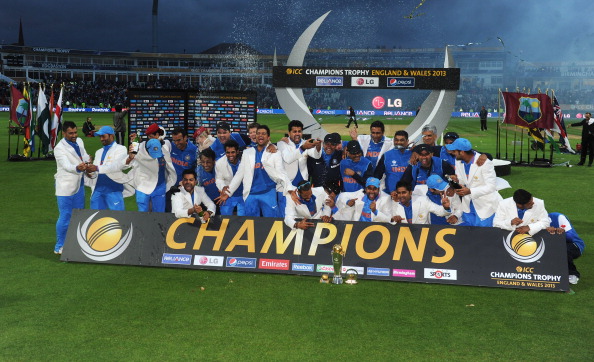What Indian cricket can learn from English football?

Just when it looked like India are set to dominate the world of cricket, the ICC threw a proverbial yorker right at the BCCI in an attempt to sweep them off their entrenched feet. However, as all the hoopla surrounding the numbers dies down, is the new system actually as bad as it sounds?
ICC's business models have fluctuated with time, but the new one has been portrayed by Indian cricketing fans as one drafted by the Devil himself. Under the previous "Big Three" revenue system, the team that contributed the most amount to the ICC's revenue would receive the highest payout. The BCCI, due to the huge demand for cricket in India, received almost 18% of the total revenue. However, the new system would see the earnings drop to an optimistic figure of 10.2%. The numbers look really stark when you convert the percentages to the actual amounts. Under the previous system, the BCCI would have earned almost 3000 crores which
So, are the rest of the cricketing nations just happy that India won't have the spending power anymore?
The answer is a little deep rooted than plain old jealousy, a popular opinion on social media. It is more of an overhaul that will see cricket attempting to become a truly worldwide sport. Even today, after eleven World Cups, there are only a handful of nations who play the sport seriously. The main reason for the lack of interest appears to be a lack of infrastructure, a must in cricket, which indirectly connects it to the monetary gains the sport provides. So how do you solve this problem? The answer is simple, if you want to become a major sport in the world, you need to follow the structure of the biggest sport in the world.

 © Getty Images
© Getty ImagesFIFA might possibly be the most corrupt organization in the world, but when it comes to running a business, they run it with a clear vision. FIFA generates revenue every year that is four times the amount that the ICC, optimistically estimated, accumulate in almost a decade. The biggest difference? They split the amount equally between all their members. First ranked Argentina get paid the exact same amount as 205th ranked Tonga. In 2014, which was a World Cup year, each federation received almost ₹ 90 crores. While that might sound like
Even though the BCCI will lose a lot of their financial power because of this, they are lucky that this has come now and not 10 years ago. What the ICC has finally realized is that in T20, they finally have a format that is not only watchable but has great marketing potential as well, and it's India and the BCCI who hold the keys to that door as well. In the IPL, the BCCI have the biggest attraction the game. Not only is it immensely popular all around the cricketing world, it is highly marketable and more importantly profitable in India. After suffering years of suffering losses, the IPL finally turned the corner in 2014, when most teams not only broke even but some of them actually made some money at the end of the year. That number is likely to increase as India dominate the international circuit and attract the best players available.

 © Getty Images
© Getty ImagesThe football equivalent of the IPL is the English Premier League. Its popularity ensures that a football fan from India wears a Wayne Rooney jersey over a Sunil Chhetri one. The English Premier League doesn't have the best players and doesn't even put up a serious challenge when it comes to European competitions, but because of the sheer entertainment value that it offers, like the IPL, it is quite easily the best league in the world. It is just that it is readily available almost everywhere in the world. The league boasts that it can reach 643 million homes, which they claim have a potential TV audience of 4.7 billion people. Their TV rights in the UK alone amount to over £5 billion that is sufficient to take care of the infrastructure in their country.
So what can the BCCI learn from this? It is all about brand building now, and India
While a lot of people have frowned at the prospect of "equality", it will only help cricket grow and can only mean good things for India. Not only is India one of the best teams in the world, the IPL will ensure that the monetary pipeline does not dry up. When there is no ongoing international series, the IPL, BBL, or the newly launched South African league will ensure that the sport is readily available for the viewer. Another major advantage of these leagues for the international audiences is that they can be fun to bet on for them with betting companies offering all sorts of odds during the game. However, even with all these matches and leagues, it is just the IPL that has all the very best players in the world playing together for a period of two months.
